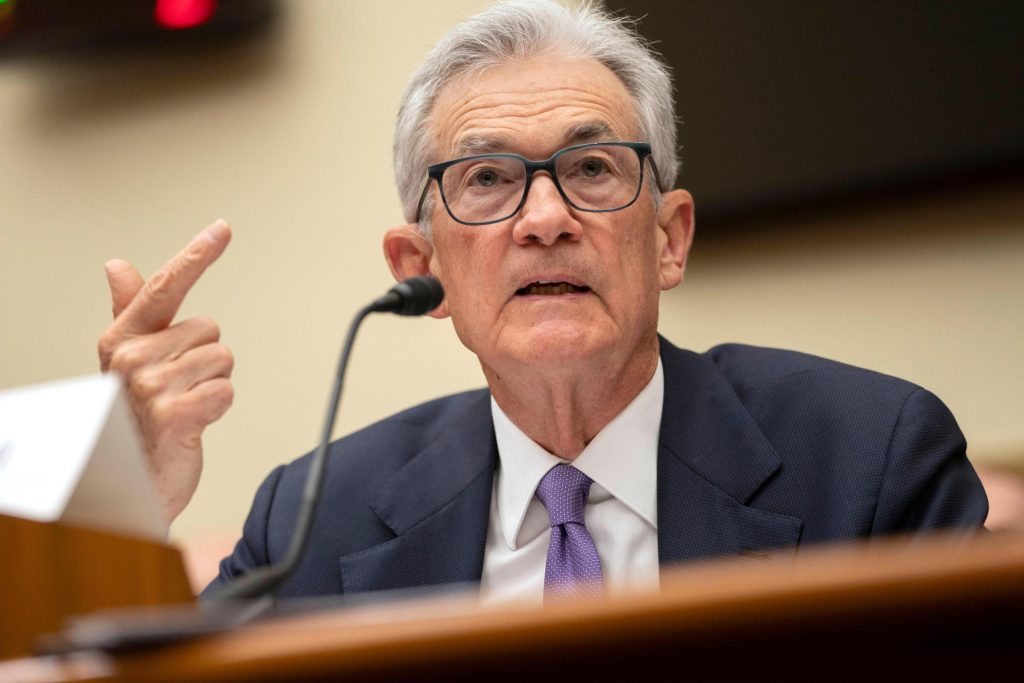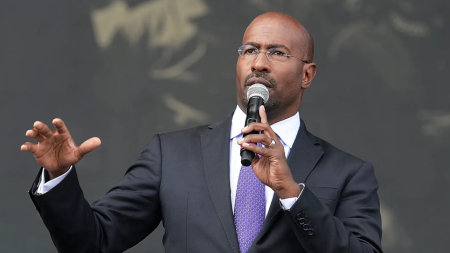By CHRISTOPHER RUGABER (AP Economics Writer)
In many parts of the United States, people are eagerly waiting for the Federal Reserve to lower its benchmark interest rate. Potential home buyers are wishing for lower mortgage rates. Wall Street traders are hoping for higher stock prices. Consumers are seeking relief from record-high interest rates on credit card debt.
Additionally, President Joe Biden is likely to benefit from lower borrowing rates for his re-election campaign.
However, Chair Jerome Powell and other Fed officials are expected to proceed cautiously, maintaining the current rate for the fifth consecutive time and indicating the need for further evidence of inflation returning sustainably to the 2% target.
The Fed's careful approach reflects the atypical nature of these potential rate cuts. Vincent Reinhart, chief economist at Dreyfus-Mellon and former Fed economist, points out that the Fed typically lowers rates quickly in a futile attempt to prevent a recession when the economy deteriorates.
This time, the economy is still doing well. The Fed is considering rate cuts only because inflation has steadily decreased from a peak of 9.1% in June 2022. As a result, they are approaching rate cuts in the same methodical manner as rate hikes – cautiously and deliberatively, while analyzing conflicting data to understand the economy's direction.
Reinhart noted that "The Fed is leading the way, not being pushed by events. That's what makes this situation different from others."
Following their last meeting in January, the central bank's policymakers had stated that they needed "greater confidence" in the cooling of inflation towards the 2% target. Since then, the government has released two inflation reports showing persistent high price increases.
Although the U.S. economy is doing well overall, high average prices compared to pre-pandemic levels have caused dissatisfaction among many Americans, whom Republicans have sought to blame Biden for. Employers are hiring, unemployment is low, the stock market is near record highs, and inflation has decreased from its highs. However, average prices remain significantly elevated compared to pre-pandemic levels.
Excluding food and energy costs, core prices increased by 0.4% monthly in both January and February, surpassing the Fed's target. In February, core prices rose 3.8% compared to the previous year, indicating the potential direction of inflation.
Housing costs showed a slowdown in February, a significant development as housing is one of the most stable price categories tracked by the government. On the other hand, more unpredictable categories such as clothing, used cars, and airline tickets drove prices up in February, but they may reverse course in the coming months.
Seth Carpenter, chief global economist at Morgan Stanley and former Fed economist, commented that the recent data did not significantly improve prospects of inflation reaching the Fed's target soon. However, it is not sufficient to change the fundamental direction of inflationary trends.
Several officials from the Fed have recently said that they expect inflation to continue going down this year, although not as quickly as in 2023.
The Fed has also included an expectation that price rises will only ease slowly this year. In December, it predicted that core inflation would reach 2.4% by the end of 2024, which is close to its current 2.8%, according to the Fed’s preferred measure.
On Wednesday, the Fed’s policymakers will update their quarterly economic projections, which are expected to match their December forecast for three rate cuts by the end of 2024. Still, it would only take two of the 19 Fed officials to change their forecast to one less rate cut for the central bank’s overall projection to downshift to just two rate cuts for 2024. Some economists expect that to happen, given that inflation has remained persistent at the start of this year.
The Fed’s benchmark rate is currently about 5.4%, the highest level in 23 years, after a series of 11 rate hikes aimed at curbing the worst inflation in four decades, but which have also made borrowing much more expensive for consumers and businesses.
Like the Fed, other major central banks are keeping rates high to ensure they have a strong hold on consumer price spikes. In Europe, there is pressure to lower borrowing costs as inflation drops and economic growth has stalled, unlike in the United States. The European Central Bank’s leader suggested this month that a possible rate cut wouldn’t come until June, while the Bank of England isn’t expected to open the door to any imminent cut at its meeting Thursday.
Most economists predict that the Fed will make its first rate cut at its June meeting, which would mean that in May, the Fed would indicate such a move. By June, the policymakers will have three more inflation readings and three more jobs reports.
Sarah House, senior economist at Wells Fargo, said that timetable leaves plenty of time for inflation to start going down again. A rate reduction would likely lead, over time, to lower rates for mortgages, auto loans, credit cards, and many business loans.
“They certainly need to see something better than the past couple of months, but they can get it,” she said.









